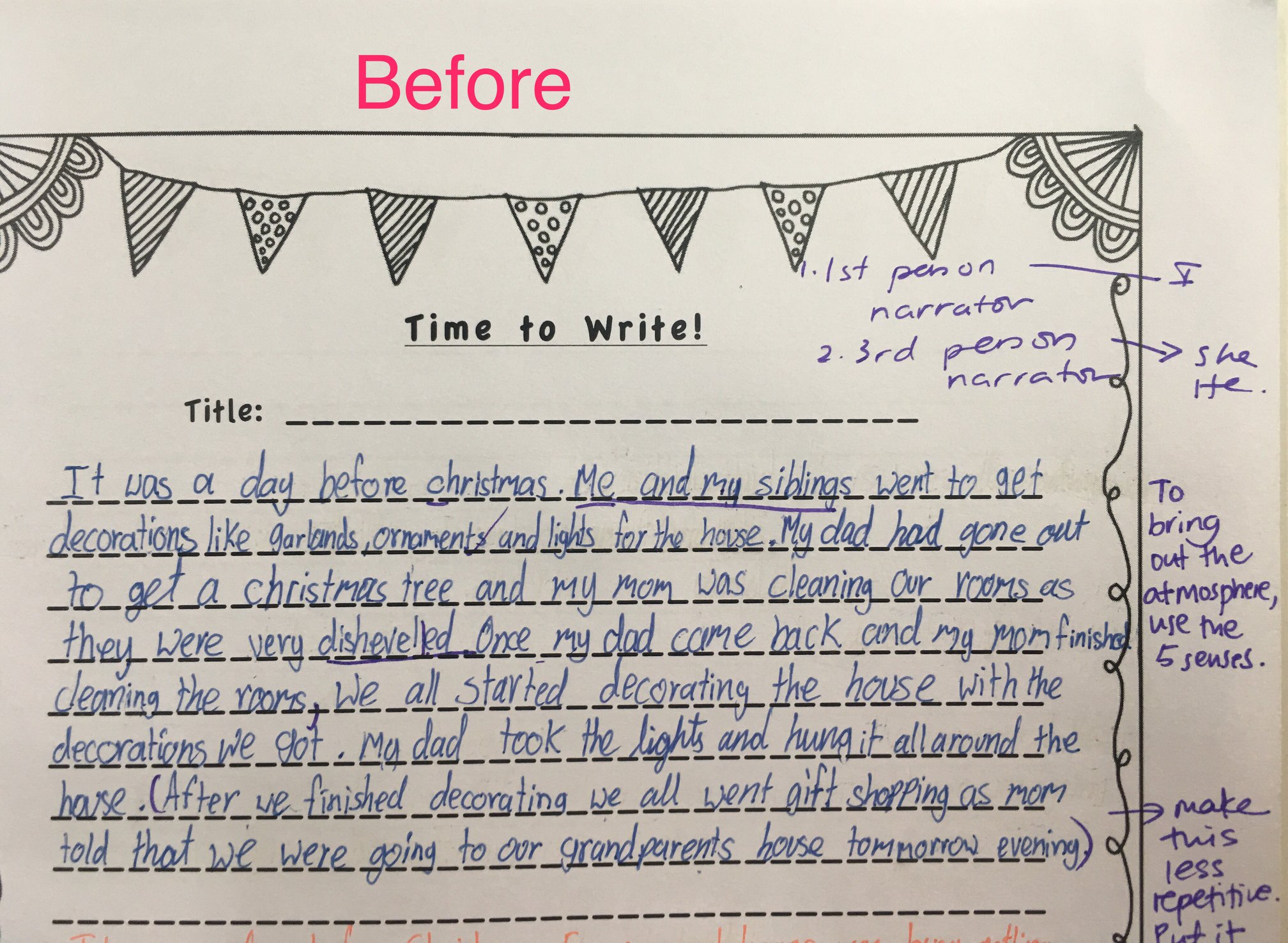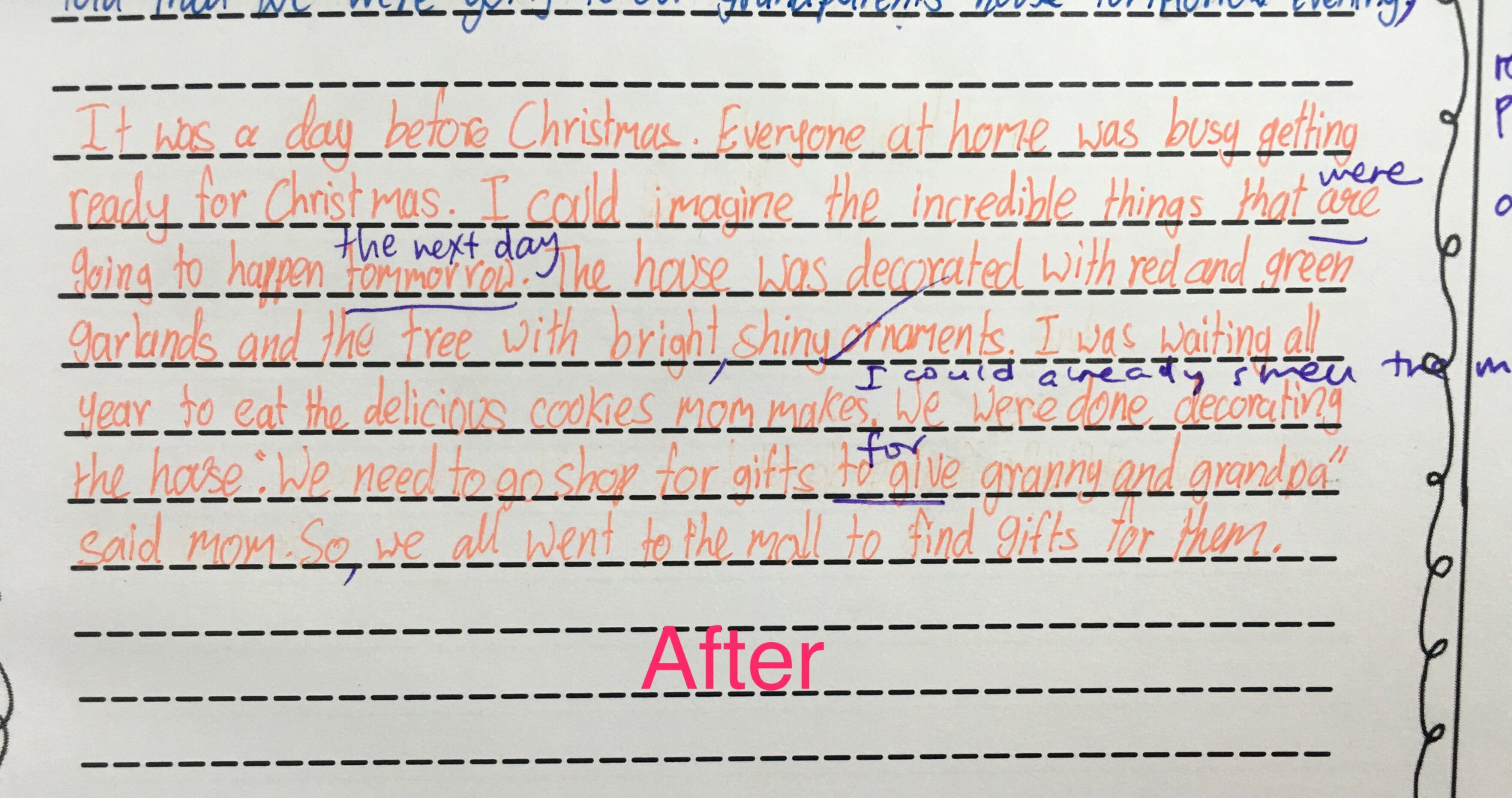Editing is an essential process in writing. When done right, editing can make the difference between poor writing and good writing or even between good writing and great writing.
Many people believe that editing just involves correcting grammatical and spelling errors. However we believe that it is more than that. When editing a paragraph, for example, one has to ask these questions:
Are the appropriate expressions used?
Does one sentence flow coherently to the next one?
Is the writing clearly communicated to the reader?
Is the writing interesting and engaging for the writer to read?
This is why we encourage our students to refine their work after writing a paragraph and not after they have finished the whole composition. Sometimes, in the editing process, we do recommend that they rewrite their paragraphs after we give them feedback on their areas of improvement. The rewritten paragraphs are always better! Here’s an example:


In the “After” paragraph, the student uses more descriptive language to draw the reader into the scene. Additionally, the student does not reveal too much, enticing the reader to carry on reading.
For other practical tips, watch this video!
Peer editing or peer review is another effective method of editing one’s writing. As part of our Young Authors Programme, we guide the students in giving and receiving feedback from their peers in terms of the strengths and areas of improvement of their writing. We also encourage the students to ask their peers questions. In doing so, the Young Authors are better able to identify the “gaps” in the written pieces.
Peer review encourages children to actively think more deeply about the process of writing and refinement. It also helps them realise that being receptive to feedback from others can help to enhance the quality of their writing.
To download a FREE worksheet on peer editing, click here !
